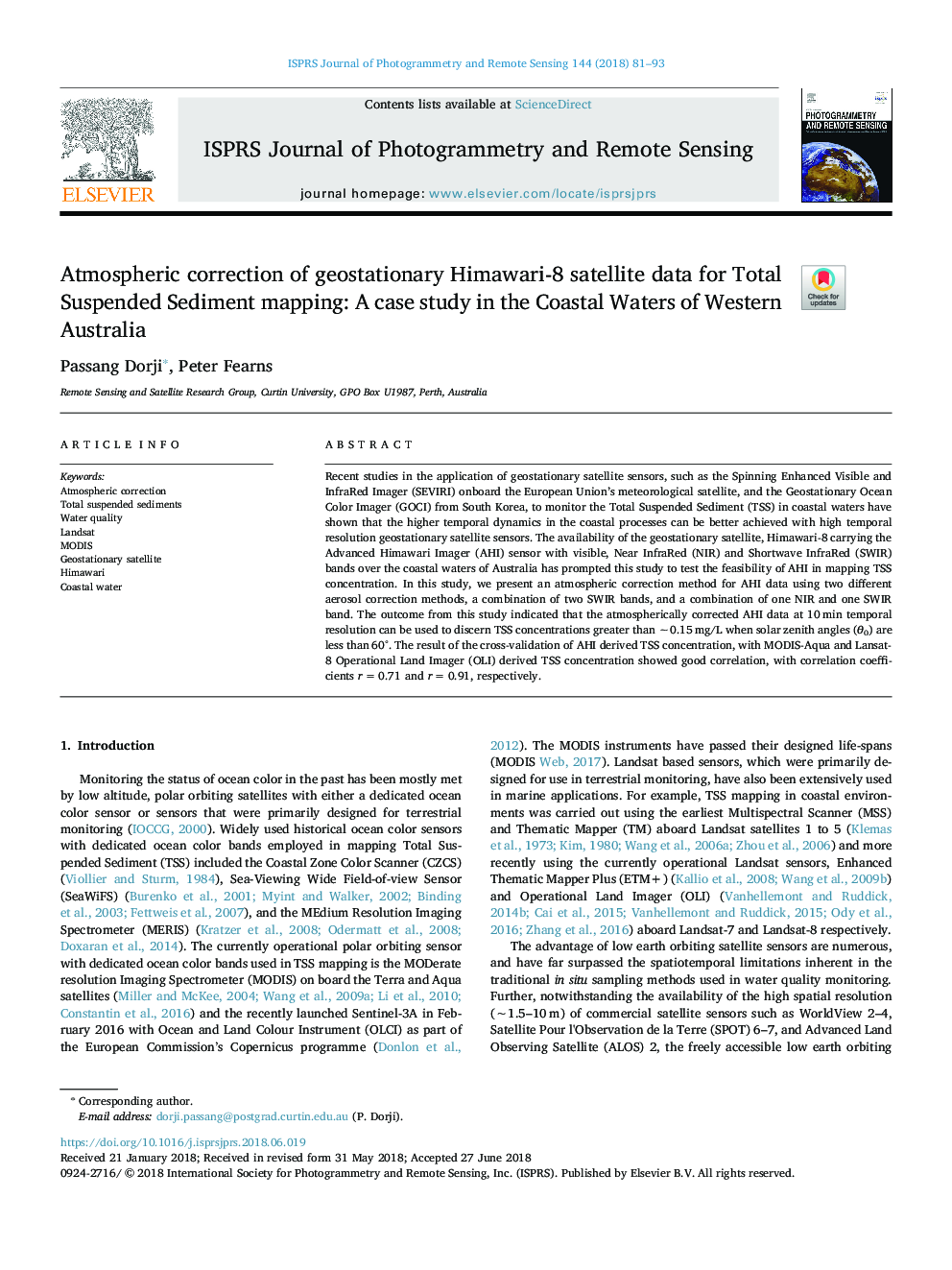| Article ID | Journal | Published Year | Pages | File Type |
|---|---|---|---|---|
| 6949024 | ISPRS Journal of Photogrammetry and Remote Sensing | 2018 | 13 Pages |
Abstract
Recent studies in the application of geostationary satellite sensors, such as the Spinning Enhanced Visible and InfraRed Imager (SEVIRI) onboard the European Union's meteorological satellite, and the Geostationary Ocean Color Imager (GOCI) from South Korea, to monitor the Total Suspended Sediment (TSS) in coastal waters have shown that the higher temporal dynamics in the coastal processes can be better achieved with high temporal resolution geostationary satellite sensors. The availability of the geostationary satellite, Himawari-8 carrying the Advanced Himawari Imager (AHI) sensor with visible, Near InfraRed (NIR) and Shortwave InfraRed (SWIR) bands over the coastal waters of Australia has prompted this study to test the feasibility of AHI in mapping TSS concentration. In this study, we present an atmospheric correction method for AHI data using two different aerosol correction methods, a combination of two SWIR bands, and a combination of one NIR and one SWIR band. The outcome from this study indicated that the atmospherically corrected AHI data at 10â¯min temporal resolution can be used to discern TSS concentrations greater than â¼0.15â¯mg/L when solar zenith angles (θ0) are less than 60°. The result of the cross-validation of AHI derived TSS concentration, with MODIS-Aqua and Lansat-8 Operational Land Imager (OLI) derived TSS concentration showed good correlation, with correlation coefficients râ¯=â¯0.71 and râ¯=â¯0.91, respectively.
Related Topics
Physical Sciences and Engineering
Computer Science
Information Systems
Authors
Passang Dorji, Peter Fearns,
